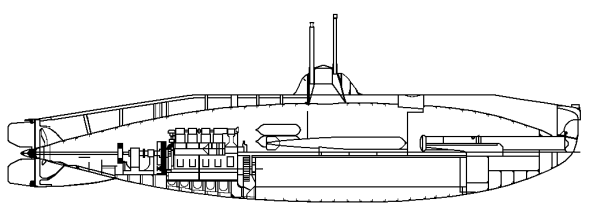

| Length | 67 feet 0 inches |
| Diameter | 11 feet 10.5 inches |
| Displacement | 123 tons |
In 1901, Arie Smit, the president of De Schelde was visited by former naval officer Van Asperen, who was acting as a representative for John Holland. Holland was employed by the Holland Torpedo Boat Company at the time, but was unhappy with the current arrangement He asked Van Asperen to explore the possibilities for a new company in the Netherlands. Holland was thinking about a new yard for submarines, but he also wanted to commit himself to an existing yard such as De Schelde. Van Asperen tried to establish a new yard in Amsterdam, but the plan failed. So he asked Arie Smit if he would like to employ Mr. Holland. In the end the negotiations failed and De Schelde signed a contract with Electric Boat Company for the construction of one submarine of the type 7-P. 1
Construction of the Luctor et Emergo began at the Shipyard of K.M. De Schelde on 1 June 1904.2 The Holland Torpedo Boat Company sent engineer Marly Hai to Vlissingen to assist with the construction.3 During a visit to Europe later that year, Frank Cable stopped to inspect a "Holland boat under construction for the Dutch government at Vlissingen." 4
The Luctor et Emergo was launched on 8 July 1905 and an American crew was sent to train the Dutch sailors.5 The American and Dutch crews had trouble working together and the trials held in late 1905 at Den Helder did not go well.6 Consequently, a second set of trials were held in 1906. This time the trials were successful.
During a meeting of the Society of Naval Architects and Marine Engineers in 1906, Lawrence Spear reported that the "Dutch government has begun the construction of submarines, the first of which has recently been accepted after exhaustive trials in the North Sea. This is of the same design and dimensions as those furnished to Japan."7
The Luctor et Emergo was sold to the Royal Netherlands Navy on 21 December 1906 and renamed Onderzeese boot 1. The O-1 was decommissioned in 1920.8
For more information on the Dutch O-1, visit the Dutch Submarine website at www.DutchSubmarines.com
ÓCopyright 1999,2000,2001,2002 Gary McCue